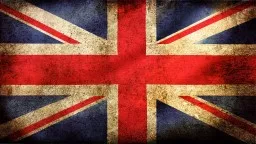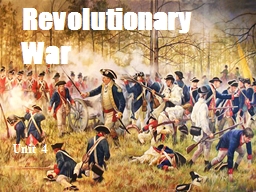PPT-The Revolutionary War British Move Against New York
Author : liane-varnes | Published Date : 2018-10-06
British Gen Howe took one last shot at resolving the Revolution diplomatically but found no success Summer 1776 Howe moved to capture New York City first routing
Presentation Embed Code
Download Presentation
Download Presentation The PPT/PDF document "The Revolutionary War British Move Again..." is the property of its rightful owner. Permission is granted to download and print the materials on this website for personal, non-commercial use only, and to display it on your personal computer provided you do not modify the materials and that you retain all copyright notices contained in the materials. By downloading content from our website, you accept the terms of this agreement.
The Revolutionary War British Move Against New York: Transcript
Download Rules Of Document
"The Revolutionary War British Move Against New York"The content belongs to its owner. You may download and print it for personal use, without modification, and keep all copyright notices. By downloading, you agree to these terms.
Related Documents














